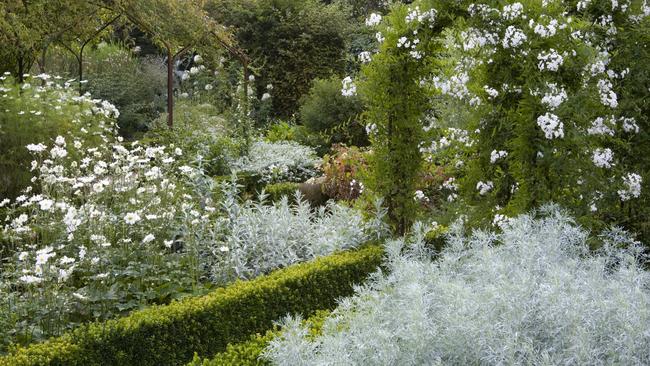Add this colour to your garden design armoury
Green in all its guises characterises the plant world but this leaf colour is the garden designer’s silver bullet.

Green in all its guises characterises the plant world but other leaf colours are just as important. Silver tends to be an adaptation to hostile growing conditions such as intense sun and dry. Light-reflecting scales, a coating of white hairs or a white waxy layer help reduce surface temperatures and water losses, so these plants tend to be tough and resilient.
Silver breaks the monotony of green but it also has more subtle effects. Woven through a garden, silver plants provide cohesion and mellowing, especially where there are strong contrasts. Repeat silver along a border for visual rhythm; team it with other colours to create different moods. Mix it with pastel pink, mauve and blue flowers for an ethereal combination, contrast it with purple-black for high drama, or use it to frame bright colours such as red, hot pink and orange.
In the UK, Vita Sackville-West used silver and grey-leafed plants to set off the beauty of white flowers for the famous White Garden at Sissinghurst (pictured). The light-reflecting qualities of silver can be used to create a “moonlight garden”. Silvery groundcovers including varieties of deadnettle (Lamium maculatum) such as ‘White Nancy’, ‘Beacon Silver’ and ‘Orchid Frost’ focus attention on feature trees. As well as silver-patterned leaves, they have pretty white or pink flowers and tolerate some shade. Lamb’s ears (Stachys byzantina) has soft, furry leaves, quickly forming low clumps or an edging border, best in sun. Dichondra ‘Silver Falls’ has long trails of small, bright silver leaves, creating a waterfall effect. Silverbush (Convolvulus cneorum) is a cottagey perennial with pretty white flowers.
To mix with shrubs and perennials in garden beds, try lavenders, wormwoods (Artemisia spp), shrubby germander (Teucrium fruticans), coastal rosemary (Westringia) and silverberry (Elaeagnus). Licorice plant (Helichrysum petiolare) is used to cover banks or clipped into cloud-like forms. With small, felty, bright silver leaves, it grows quickly in sun or part shade. One of the few silver plants to do well in shade is silver plectranthus (Coleus argentatus), a plush, east coast native perennial. Its velvety leaves gently illuminate shaded spots.
Silver is a common colour among dry-tolerant succulents. Cotyledon orbiculata ‘Silver Waves’ has large paddles of bright white silver; Kalanchoe ‘Silver Spoons’ has spoon-shaped silver leaves; silver dollar plant (Crassula arborescens) has round, blue-silver leaves; and panda plant (Kalanchoe tomentosea) features felty, silver leaves edged with black spots. All are excellent in pots.
–
Send your questions to: helenyoungtwig@gmail.com or Helen Young, PO Box 3098, Willoughby North, NSW 2068. The best question for November wins two copies of Dream Gardens by Michael McCoy (Hardie Grant, $70 each). October’s winner is Joan Lester for her question about bees collecting rust pustules.


To join the conversation, please log in. Don't have an account? Register
Join the conversation, you are commenting as Logout